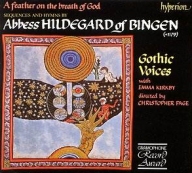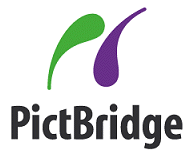


 Hildegard von Bingen was one of the greatest women of history. Born at the end of the 11th century and living into her 80s, Hildegard became Abbess of the nunnery at Bingen, but she was a person of many talents. Theology, music and poetry were amongst them, but she also became a famous woman of medecine and science, and as her fame grew she became advisor to kings and popes. She was also a talented brewer, and apparently the first person ever to add hops to beer. Then, perhaps because of the sexism of her society, and most of those since, she was largely forgotten until about 25 years ago, when her mystical writings started once again to become popular, followed by her music.
Hildegard von Bingen was one of the greatest women of history. Born at the end of the 11th century and living into her 80s, Hildegard became Abbess of the nunnery at Bingen, but she was a person of many talents. Theology, music and poetry were amongst them, but she also became a famous woman of medecine and science, and as her fame grew she became advisor to kings and popes. She was also a talented brewer, and apparently the first person ever to add hops to beer. Then, perhaps because of the sexism of her society, and most of those since, she was largely forgotten until about 25 years ago, when her mystical writings started once again to become popular, followed by her music.
 It's pushing 100°F in the Adelaide shade today. In nine days I'll be on a plane heading for Poland and I'm likely to see sub-zero temperatures. Those sort of temperature extremes take a toll on digital devices, and memory cards can be particularly vulnerable.
It's pushing 100°F in the Adelaide shade today. In nine days I'll be on a plane heading for Poland and I'm likely to see sub-zero temperatures. Those sort of temperature extremes take a toll on digital devices, and memory cards can be particularly vulnerable.
 Along with laptop computers and cellphones, digital cameras are surely one of the most stolen 'personal accessories'. Cellphones have IMEI numbers, SIM card locks and passwords. Computers have operating system passwords and BIOS level protection, and biometric security devices such as fingerprint scanners are currently coming onto the market. Laptops and cellphones are still stolen in vast numbers, probably because thieves know that most owners don't use the security features available, but at least owners are being offered options.
Along with laptop computers and cellphones, digital cameras are surely one of the most stolen 'personal accessories'. Cellphones have IMEI numbers, SIM card locks and passwords. Computers have operating system passwords and BIOS level protection, and biometric security devices such as fingerprint scanners are currently coming onto the market. Laptops and cellphones are still stolen in vast numbers, probably because thieves know that most owners don't use the security features available, but at least owners are being offered options.

 Seems like every second blog is talking about BlogExplosion. You know the kind of thing——"Hey, you should check out BE. It's really cool. I'm getting hundreds of hits a week. You should sign up. You really should. Blah-de-blah-de-blah".
Seems like every second blog is talking about BlogExplosion. You know the kind of thing——"Hey, you should check out BE. It's really cool. I'm getting hundreds of hits a week. You should sign up. You really should. Blah-de-blah-de-blah".

 Digicam manufacturers all rave about how their latest cameras are 'PictBridge' enabled. Yup, you can print directly from your camera to your PB enabled printer without turning on your computer for a single solitary moment, not even a little bit. Sure my computer's on all the time anyway. Sure, I am completely opposed to plugging cables into my expensive digicam because once you stuff up the weedy little connectors your entire camera becomes a paperweight. PictBridge is really exciting technology, right?
Digicam manufacturers all rave about how their latest cameras are 'PictBridge' enabled. Yup, you can print directly from your camera to your PB enabled printer without turning on your computer for a single solitary moment, not even a little bit. Sure my computer's on all the time anyway. Sure, I am completely opposed to plugging cables into my expensive digicam because once you stuff up the weedy little connectors your entire camera becomes a paperweight. PictBridge is really exciting technology, right?



Opinions expressed within this blog are not necessarily those of the author, as he is known to vacillate, and may deny all knowledge if asked about it in the future. However, that disclaimer doesn't apply to this Disclaimer, of course. Opinions expressed in this Disclaimer are definitely the view of the author, except when they very clearly are not. Got it?
If you read anything on this blog, you are entirely responsible for any deleterious effects which may result in you or others of any species, known or unkown, real or imagined. You are licensed for the non-commercial use of any material from this blog as long as proper attribution and notification is given. The author reserves the right to withdraw such licensing at the merest whim should he not like the way you use his stuff. Commercial use may be negotiated. Pretty easily, in fact. You wanna pay me, who am I to argue, right?